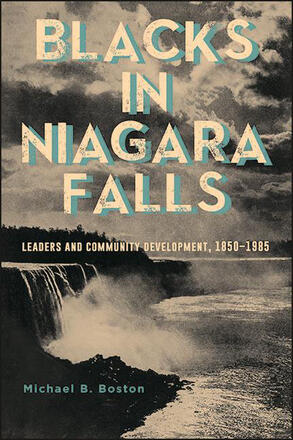
Blacks in Niagara Falls
Leaders and Community Development, 1850-1985
Alternative formats available from:
A detailed study of the history of African Americans in a small upstate New York city from the days of the Underground Railroad to the deindustrialization of the 1980s.
Description
Blacks in Niagara Falls narrates and analyzes the history of Black Niagarans from the days of the Underground Railroad to the Age of Urban Renewal. Michael B. Boston details how Black Niagarans found themselves on the margins of society from the earliest days to how they came together as a community to proactively fight and struggle to obtain an equal share of society's opportunities. Boston explores how Blacks came to Niagara Falls in increasing numbers usually in search of economic opportunities, later establishing essential institutions, such as churches and community centers, which manifested and reinforced their values, and interacted with the broader community, seeking an equitable share of other society opportunities. This singular examination of a small city significantly contributes to Urban History and African American Studies scholarly research, which generally focuses on large cities. Combining primary source data with extensive interviews gathered over an eighteen-year period in which the author immersed himself in the Niagara community, Blacks in Niagara Falls offers an insightful study of how one small city community grew over its unique history.
Michael B. Boston is Associate Professor of African and African American Studies at the College at Brockport, State University of New York. He is the author of The Business Strategy of Booker T. Washington: Its Development and Implementation and Dr. Skinner's Remarkable School for Colored Deaf, Dumb, and Blind Children 1857–1860.